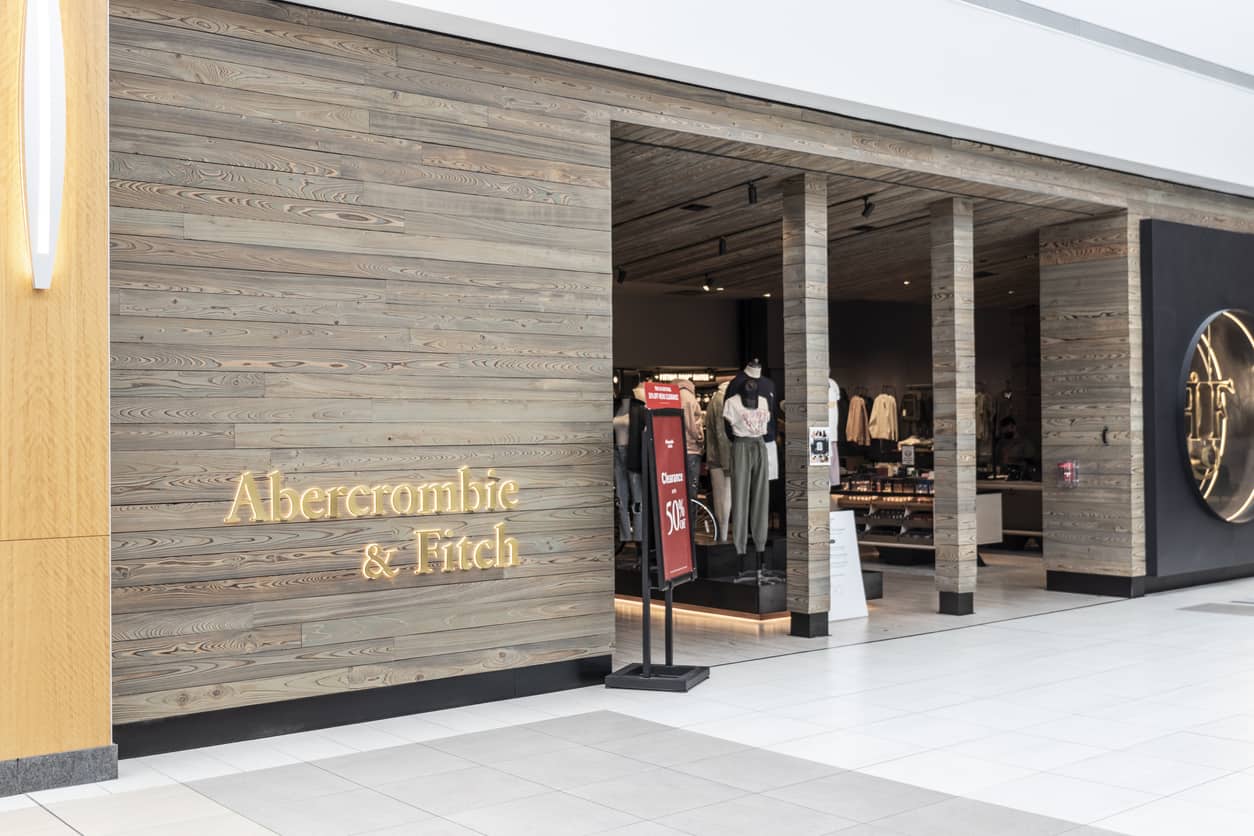
iStock.com/jetcityimage
How Did Abercrombie Become Cool With Millennials?
Abercrombie & Fitch reported that sales jumped 35% at its flagship Abercrombie brand in the fourth quarter on top of a 14% gain in the fourth quarter of the previous year, continuing its unexpected turnaround.
With quarterly results regularly beating Wall Street targets, Abercrombie’s shares have surged over 400% in the last 12 months.
“There is no silver bullet,” CEO Fran Horowitz said on the fourth-quarter analyst call, responding to the hypothetical question on the company’s continued outperformance. “It has been about…executing a focused playbook every single day, one that is rooted intimately in knowing our customer and then meticulously building the product, voice and experience to match their needs.”
Taking over as CEO in 2017, Horowitz’s first major move was to reposition Abercrombie, a preppy status symbol for high schoolers during the 1990s and 2000s, to focus on younger millennials, particularly women. The shift provided differentiation from Hollister, its surf-inspired teen chain, while enabling Abercrombie to address a broader and less-targeted market.
“They are living their best lives,” Horowitz told WWD. “There’s nothing better than being a young millennial. They live for the long weekend. Monday would come along and the most important thing for them was what was happening the next weekend.”
The Abercrombie team mapped out a 96-hour calendar to address the needs of what its new target consumers were doing over that “long weekend” — whether heading to the gym or happy hour, traveling, or attending a bachelorette party, bridal shower, or wedding.
“We can actually make sure that we clothe them for those 96 hours,” Horowitz told WWD. “As simple as it sounds, and it was not simple, that was the turning point. That got the merchants, the designers, the marketing team all focused on what was important to them.”
In product, Abercrombie introduced blazers and suits for the office, dresses for weddings and other parties, and workout gear. Embracing a more inclusive approach, sizes were expanded, while looser fits and curvier jeans arrived. The product was positioned as aspirational at accessible prices.
Kristen Classi-Zummo, an apparel analyst at the market research firm Circana, told Fortune, “It’s the right assortment for a balanced lifestyle. Abercrombie is not trying to be super trendy: It’s offering classic silhouettes in classic colors, and it is really serving them right now.”
A focus on keeping inventory tight helps regularly bring fresh assortments to stores while boosting margins. Horowitz told Yahoo Finance, “Our biggest learning coming out of COVID is this discipline on inventory and making sure that we are lean and mean and that we are reacting to the business on a weekly basis.”
The Abercrombie chain’s real estate was streamlined with closures of mega-flagships and a focus on smaller, intimate spaces. Moving away from the perfumed, clubby atmosphere of the past, store updates brought in brighter lighting, white and cream paint, and sophisticated touches, such as wood paneling and glass chandeliers.
In marketing, Abercrombie’s ads now feature models of many skin tones and body types with a focus on real women and their experiences in a shift away from the sexually charged imagery of the past.
As the business began to turn by holiday 2019, the #AbercrombieIsBack hashtag began trending on TikTok. Paid advertising and unpaid posts on TikTok as well as investments in influencers across social media have helped create awareness about the reimagined Abercrombie.
Chief Marketing Officer Carey Collins Krug told the Wall Street Journal, “We have a huge army of brand advocates and creators that also create content for us and what we have found is that when you lean into content creators that are native to the platform, that media will perform significantly better than content that we create for those platforms.”
Discussion Questions
What lessons can be gleaned from the Abercrombie chain’s reinvention and recovery?
Do you see any threats to Abercrombie’s renewed growth trajectory?
